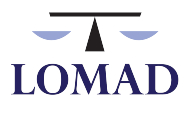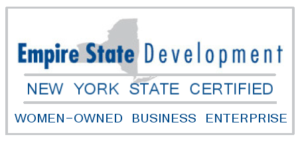By decision drafted by Justice Pigott (Justices Read, Smith and Abdus-Salaam concur) the New York Court of Appeals affirms that the Workers’ Compensation Board did not exceed its statutory authority when it promulgated portions of the Medical Treatment Guidelines.
The facts involved a claimant who sustained injuries to her neck and back. The carrier of record was Special Funds Conservation Committee under the Fund for Reopened Cases (WCL § 25-a). The claimant was receiving acupuncture treatment three times per week for a period of six weeks in 2009. After the implementation of the Medical Treatment Guidelines the claimant’s Doctor sought authorization for three acupuncture treatments per week for a period of six months to the cervical and lumbar spine. In response to the newly created Medical Treatment Guidelines, claimant’s Doctor submitted two variance requests for the acupuncture treatment, one under the neck Medical Treatment Guidelines and one under the back Medical Treatment Guidelines.
The carrier in response to the variance requests obtained an independent medical examination [“IME”] that found further acupuncture treatments were not medically necessary. Based on the IME examiner’s findings the carrier denied both variance requests.
The claimant sought review by a Law Judge of the carrier’s denials.
Both medical providers then testified as to whether the variances should be granted or denied as to the additional acupuncture treatment. Claimant’s treating medical provider testified that the claimant had undergone other treatment modalities but that acupuncture was the only modality that helped maintain her functional level. The IME examiner testified that claimant’s treatment provider failed to meet the burden of proof when seeking the variance in that he did not include the claimant’s response to treatment or any improvement in her range of motion from the treatment.
The Worker’s Compensation law judge affirmed the carrier’s denials of the treatment determining that the provider failed to show that additional acupuncture treatments were medically necessary. The Law Judge specifically noted that the earlier treatments provided no evidence of objective improvement of functional outcomes.
The claimant filed an administrative appeal of the Law Judge’s decision, which ultimately affirmed the Workers’ Compensation Law Judge’s determination and further found that the variance application failed to meet the burden of proof in that there was no demonstration that additional acupuncture treatment was medically necessary within the Medical Treatment Guidelines.
The claimant appealed the board’s decision to the Third Appellate Department arguing: (1) the Board lacked the authority to promulgate the regulations and incorporate the guidelines; (2) the variance procedure improperly shifts the burden of proof to the claimant’s physician to prove medical necessity of a treatment modality; and (3) the Guidelines violate claimant’s due process rights to a meaningful hearing.
Ultimately, the Third Appellate Department affirmed holding
the Board acted within its legislatively conferred authority when it devised a list of preapproved medical care deemed in advance to be medically necessary for specified conditions, and did so in a manner consistent with Workers’ Compensation Law § 13(a) and overall statutory scheme.
In rendering its opinion the Third Appellate Department also held medical necessity and appropriateness are always prerequisites to an employer’s obligation to pay and the legislature purposefully conferred the authority on the Board to predetermine medical necessity for medical care, and its scope in duration, consistent with best medical practices.
Significantly, the Third Appellant Department in rendering this opinion also concluded that medical treatments falling outside the treatment guidelines are predetermined and presumed not to be medically necessary. See, Matter of Kigin v. State of N.Y. Workers’ Compensation Bd., 109 A.D.3d 299 (3 Dept. 2013)(Emphasis Added).
The claimant then sought leave to appeal to the Court of Appeals, which was granted. Matter of Kigin v. State of N.Y. Workers’ Compensation Bd., 22 N.Y.3d 854 (N.Y. 2013).
The Court of Appeals held that the Board’s promulgation of the guidelines was proper and lawful act. They held that the Board’s Act of creating the Guidelines was a reasonable supplement to WCL § 13 to promote an overall statutory framework intended to provide medical care to injured workers. Significantly, the New York Court of Appeals noted that the board was authorized to issue a list of pre-authorized procedures pursuant to WCL § 13-a. In rendering its analysis Court of Appeals commented that determination necessarily meant that the Board consider what is not best practice and what may not be medically necessary.
The Court of Appeals then noted for treatments not in accord with the medical treatment guidelines “may nevertheless be approved” through the variance process.
In response to the claimant’s argument that the Board’s Guidelines have shifted the burden of proof from the employer to the carrier the Court held that there was nothing with in the Worker’s Compensation Law that ever precluded the Board from requiring proof of medical necessity from the claimant’s health care provider. In fact, the Court of Appeals went further to noting that WCL § 13-a presupposes that the treating medical provider has already submitted a first opinion for the needed treatment. Regarding the presumption under WCL § 21(5), the Court of Appeals held that the presumption remains as to the facts contained in medical report, but that a claimant must first demonstrate medical necessity for the treatment.
Finally, the Court of Appeals held the variance process does afford claimant’s meaningful opportunity to be heard on any denial of a variance and as such due process has not been denied.
There was a dissenting opinion drafted by Justice Riviera (Justices Lippman and Graffeo join). Justice Riviera would reverse the Appellate Division’s decision based on the variance scheme pre-determining that all treatment not included on the preauthorized list of services is presumptively not medically necessary, thereby imposing a burden on claimants that’s inconsistent with the statute’s language an underlying purpose of protecting workers.
The Court of Appeals has confirmed that the Board did have the authority to create the Medical Treatment Guidelines, that treatments not contained in the Medical Treatment Guidelines are predetermined and presumed to not be medically necessary, and that the burden of proof for medical necessity initially rests with the claimant’s treating medical provider.
See, Matter of Maureen Kigin, Appellant, v. State of New York Workers’ Compensation Board et al., Respondents. No. 181. Argued 10/14/14 and Decided 11/20/14 .

